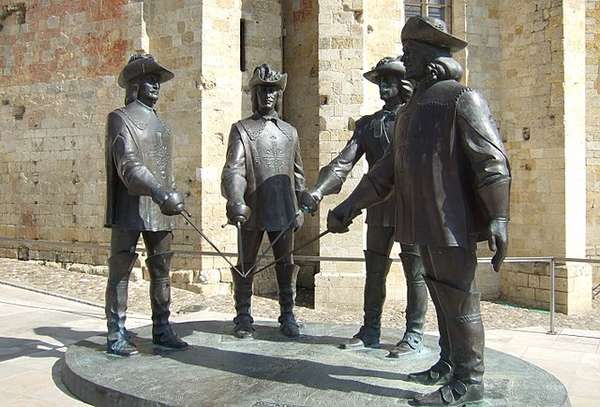Professions: The Three Musketeers
- 21. October 2019 - General, Knowledge, Professions, Onomastics
When we recently read the word “Musketeer” (Musketier) as a profession on a German death certificate from the year 1918, we hesitated for a moment - even though we come across various (and stranger) professions every day. However, the first thing that comes to mind is the three musketeers from the novel by Alexandre Dumas from 1844. And we would not suspect them in Germany or the 20th century.
A Musketeer was simply a soldier equipped with a musket (a long gun with a matchlock). Until the First World War, the term was used in Germany for simple infantry soldiers, even though they were no longer fighting with a musket.
The question remains: Why did the musketeers in Alexandre Dumas novel fight rather with épée than muskets?
The novel tells the story of d'Artagnan, who sets out for Paris in 1625 in order to become a member of the “Musketeers of the Guard” (Mousquetaires de la garde). This fighting company of the military branch of the royal household of the French monarchy was called musketeers, but with regard to their assignments and equipment they were rather Dragoons (mounted infantry). It was a royal guard and combat troop, but also an educational establishment particularly for young aristocrats. The minimum age for joining was 15 years, but there were exceptions for high nobility. Fencing, dancing and riding was taught among other things.
Muskets came up around the 16th century and had the advantage that it was possible to fight opponents that were relatively far away. They were not very precise, but in front of a horde of attackers, chances were good to hit someone. Problems were the weight and length: More than 10 kilogram and 1.70 meters. When the opponent came close, an épée or saber served as a melee weapon.
Additionally, every musketeer had to account for his own equipment, this means the horse, clothing, and weapons had to be paid for. Since swords were less expensive than firearms, many musketeers were rather armed with épées or sabers than with a musket.
By the way, if your surname is Säbel or Saebel (saber), your ancestors were not automatically fighters. As most often in genealogy, the origin of your ancestors plays a big role:
If they came from the region Hesse, it is absolutely possible that one ancestor was wearing a saber. If they came from Low Germany, it is more likely that they had to do with sables and therefore might have been hunters or furriers. Another possible explanation for the name is that the ancestors came from one of the places called Sabel/Säbel in Mecklenburg or Silesia. Last but not least, a connection to the old Germanic first name Segbald/Siegbald is possible.


0 comments